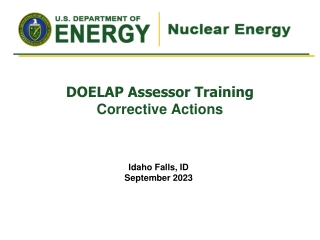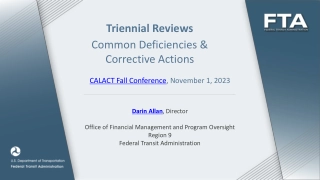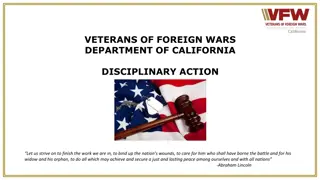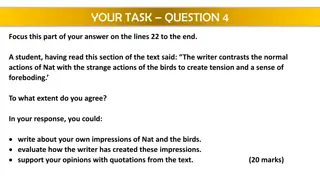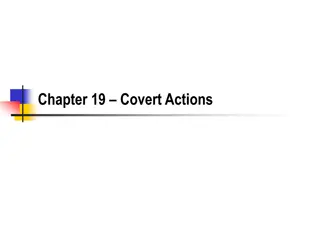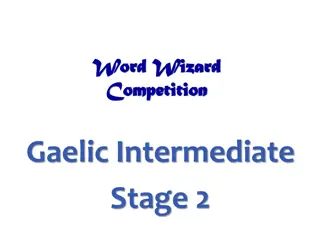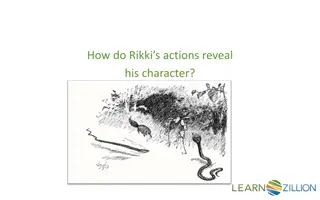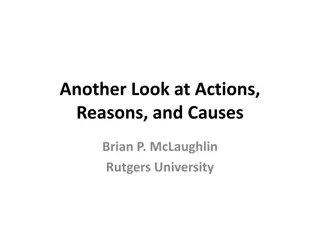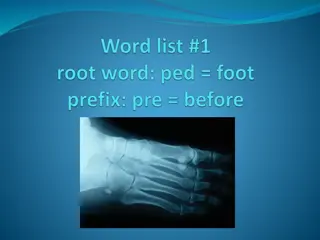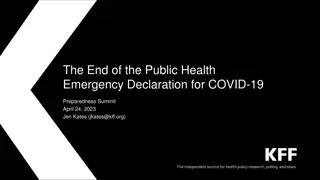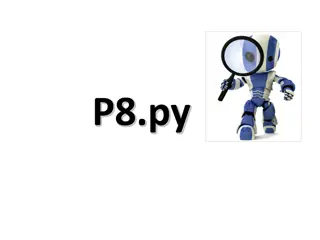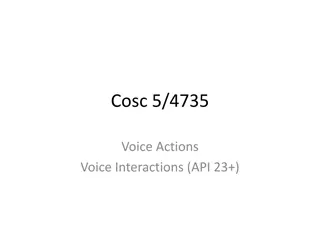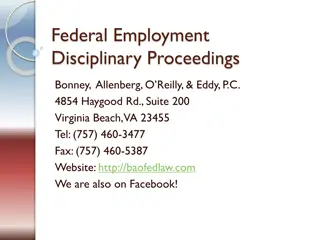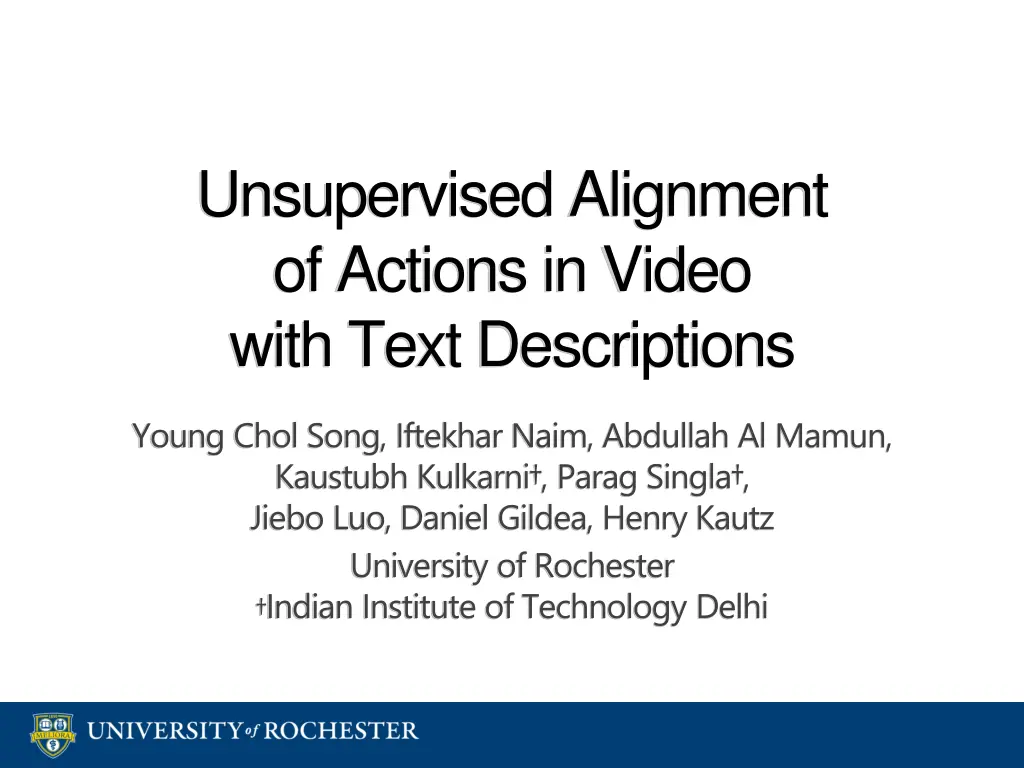
Unsupervised Alignment of Actions in Video with Text Descriptions
Explore the innovative approach of aligning actions in videos with text descriptions using unsupervised methods. Learn about the motivation, challenges, and contributions in this field, such as generating labels from data, extending methods to include verbs and actions, and matching nouns to objects. Discover how hyperfeatures are used to align motion features with verbs in text descriptions, creating high-level representations for effective alignment.
Download Presentation

Please find below an Image/Link to download the presentation.
The content on the website is provided AS IS for your information and personal use only. It may not be sold, licensed, or shared on other websites without obtaining consent from the author. If you encounter any issues during the download, it is possible that the publisher has removed the file from their server.
You are allowed to download the files provided on this website for personal or commercial use, subject to the condition that they are used lawfully. All files are the property of their respective owners.
The content on the website is provided AS IS for your information and personal use only. It may not be sold, licensed, or shared on other websites without obtaining consent from the author.
E N D
Presentation Transcript
Unsupervised Alignment of Actions in Video with Text Descriptions Young Chol Song, Iftekhar Naim, Abdullah Al Mamun, Kaustubh Kulkarni , Parag Singla , Jiebo Luo, Daniel Gildea, Henry Kautz University of Rochester Indian Institute of Technology Delhi
Background and Motivation Unsupervised alignment of parallel video and text Examples: The person takes out a knife and cutting board - Not all data is labeled! In the kitchen Text: Recipe Video: Food preparation ? In the laboratory Text: Lab protocol Video: Experiment Example of parallel video and text in a kitchen environment
Background and Motivation Motivation Generate labels from data (reduce burden of manual labeling) Extend methods to include verbs and actions Learn new actions from only parallel video+text Matching Nouns to Objects Limitations of Noun/Object - Objects still need to be labeled and tracked - New and deformable objects Matching Verbs to Actions The person takes out a knife and cutting board Assumptions for Alignment - Video follows the same sequential order as the text [Naim et al., 2015] Contributions Use of hyperfeatures to align motion features to verbs Extension and evaluation of LCRF on action-verb pairs, with no object tracking
Hyperfeatures for Actions High-level features required for alignment with text Motion features are generally low-level Hyperfeatures, originally used for image recognition extended for use with motion features Use temporal domain instead of spatial domain for vector quantization Originally described in Hyperfeatures: Multilevel Local Coding for Visual Recog- nition Agarwal, A. (ECCV 06), for images Codebook of Motion Features Codebook of Action Fragments and Clusters Verbs in Language The person removes a carrot from the refrigerator Cluster 42 The person takes out a large knife and a cutting Cluster 19 board Hyperfeatures for actions
Hyperfeatures for Actions From low-level motion features, create high-level representations that can easily align with verbs in text Align hyperfeatures with verbs from text (using LCRF) Each color code is a vector quantized feature point Feature Centroid 3, 5, ,5,20 = Hyperfeature 6 Accumulate over frame at time t & cluster Conduct vector quantization of the histogram at time t Accumulate clusters over window (t-w/2, t+w/2] and conduct vector quantization first-level hyperfeatures Feature Centrioid 3 at time t Vector quantized STIP point histogram at time t
Latent-variable CRF Alignment CRF where the latent variable is the alignment N pairs of video/text observations {(xi, yi)} i=1 (indexed by i) Xi,m represents nouns and verbs extracted from the mth sentence Yi,n represents blobs and actions in interval n in the video Conditional likelihood N conditional probability of feature function (noun, blob), (verb, blob), (verb, action), jump size where Learning weights w Stochastic gradient descent More details in our NAACL Paper (Naim et al. 2015): Discriminative unsupervised alignment of natural language instructions with corresponding video segments
Experiments: Wetlab Dataset RGB-Depth video with lab protocols in text Compare addition of hyperfeatures generated from motion features to previous results (Naim et al. 2015) Previous results using object/noun alignment only of motion features Addition of different types Average Alignment Accuracy (%) LCRF Naim et al. +STIP 65.59 66.55 85.09 87.10 Hand and Object Tracking LCRF LCRF +DTraj2 67.77 86.92 LCRF +CNN 66.91 87.38 Vision Tracks Manual Tracks Detection of objects in 3D space using color and pointcloud *Using hyperfeature window size w=150 2DTraj: Dense trajectories Minor improvement over previous results Activities highly correlated with object-use
Experiments: TACoS Dataset RGB video with crowdsourced text descriptions Activities such as making a salad, baking a cake No object recognition, alignment using actions only Example of text and video alignment generated by the system on the TACoS corpus for sequence s13-d28 Crowdsourced descriptions
Experiments: TACoS Dataset RGB video with crowdsourced text descriptions Average Alignment Accuracy (%) Uniform Unsupervised LCRF +STIP Unsupervised LCRF +CNN Segmented LCRF 34.87 . 43.07 . 44.14 . 51.93 . *Using hyperfeature window size w=150 Segmented LCRF: Assume the segmentation of actions is known, infer only the action labels Unsupervised LCRF: Both segmentation and alignment are unknown Effect of window size and number of clusters Consistent with average action length: 150 frames *d(2)=64 Window Size w 75 150 Centroid s D(1) = 64 D(1) =128 15 300 42.44 41.58 450 35.17 43.40 44.1 4 37.65 42.52 42.85 43.01 42.01

